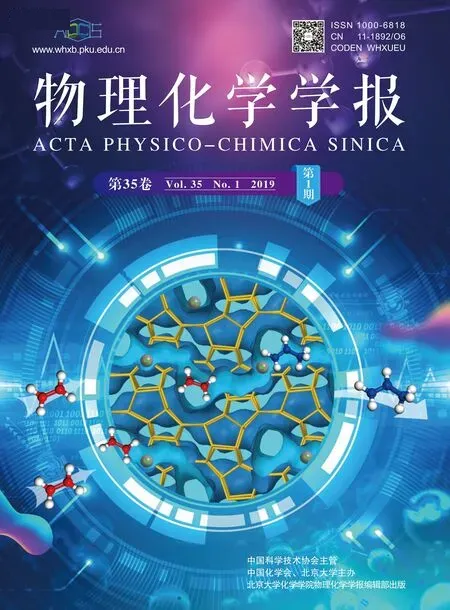Research on Electron Transfer in the Microenvironment of the Biofilm by Scanning Electrochemical Microscopy
TIAN Xiaochun , WU Xuee , ZHAN Dongping , ZHAO Feng , JIANG Yanxia , SUN Shigang
1 College of Chemistry and Chemical Engineering, Xiamen University, Xiamen 361005, Fujian Province, P. R. China.
2 CAS Key Laboratory of Urban Pollutant Conversion, Institute of Urban Environment, Chinese Academy of Sciences, Xiamen 361021, Fujian Province, P. R. China.
Abstract: Microorganisms exploit extracellular electron transfer (EET) with external minerals during their growth. This process is accompanied by the conversion of chemical energy. Direct electron transfer (DET) from the microorganisms to solid electron acceptors via membrane-bound cytochrome c enzymes or conductive nanowires/pili has been reported. In previous studies, mediated electron transfer (MET) has also been demonstrated to occur through electrochemically active metabolites acting as redox mediators.The microorganisms with EET capabilities have been harnessed for bioelectrochemical systems (BESs) in the bioremediation of environmental contaminants and the production of biofuels and nanomaterials. Electron transfer at the electrode biofilm/solution interface is one of the core phenomena occurring in BESs. The study of the redox reactions occurring in the microenvironment of the biofilm should elucidate the mechanism of microbial EET, which will then help improve the electron transfer efficiency of BESs. The composition of a biofilm is complex and contains many redox secreta and extracellular polymeric substances. Therefore, the specific current generated from the DET or MET pathways cannot be solely detected using classic electrochemical methods. In the present study, the interfacial electron transfer of Shewanella oneidensis MR-1 on an ITO surface was investigated. Cyclic voltammetry (CV) was first applied to study the redox properties of Shewanella and its interaction with ferrocenylmethanol (FcMeOH), which served as an exogenous electron mediator. The cyclic voltammograms showed that the oxidation current of S. oneidensis MR-1 was dramatically enhanced in the presence of 0.01 mmol·L-1 FcMeOH compared to a control, i.e. bacterium-free ITO. This can be explained by the ability of S. oneidensis MR-1 to reduce FcMeOH+ during the positive scan. These results also showed that FcMeOH was a good redox mediator and capable of transferring electrons between the electrode and the bacterial cells. In addition, using the penetration mode in scanning electrochemical microscopy, the current generated from the MET by FcMeOH was collected using a microelectrode. Examination of the approaching curve showed that the current started to increase when the tip was approaching the solution/biofilm interface, providing positive feedback for the FcMeOH-mediated electron transfer between the microelectrode and the bacterial cells. The electrode biofilm/solution microenvironment was also detected, showing the thickness of the solution/biofilm to be 500 μm and the thickness of the biofilm to be 1100 μm. This study indicates that scanning electrochemical microscopy can be used in studying microbial MET. It also provides insight into the electron transfer mechanism of the microbial metabolism from a physical chemistry perspective.
Key Words: Extracellular electron transfer; Shewanella; Scanning electrochemical microscopy; Penetration mode;Electron shuttle


